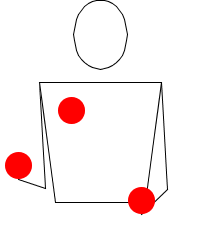| Revision as of 19:51, 13 January 2011 editThanar (talk | contribs)Extended confirmed users587 editsm →External links← Previous edit | Revision as of 13:26, 10 January 2012 edit undo63.248.107.62 (talk)No edit summaryNext edit → | ||
| Line 8: | Line 8: | ||
| The overall pattern, while hard to describe, results in a fluid and natural spiraling motion of the hands and balls. The trick is notoriously difficult to understand,<ref name=Gillson /> especially from a written description. A video link to a performance of the trick can be found in the external links. | The overall pattern, while hard to describe, results in a fluid and natural spiraling motion of the hands and balls. The trick is notoriously difficult to understand,<ref name=Gillson /> especially from a written description. A video link to a performance of the trick can be found in the external links. | ||
| Learning Rubenstein's Revenge is as difficult as understanding it in a written form, especially for beginners. But, if you're determined to learn it then I would suggest first only juggling the balls that orbit each other and only pretend to throw the outside ball. After you can do this very consistently, start using the outside ball, only throw one full rotation of the pattern first, and if you can do that than try two, then three and then as many as you can consecutively. | |||
| ==References== | ==References== | ||
Revision as of 13:26, 10 January 2012

Rubenstein's Revenge is a 3-ball toss juggling pattern named by George Gillson after its inventor, Rick Rubenstein. Along with Mills Mess and Burke's Barrage it is one of three well known named juggling patterns that involve complex carries and crossed arm throws. Rubenstein's Revenge is usually considered the most involved and difficult of the three.
Description
Rubenstein's Revenge is shape distortion of the three ball siteswap 52233. A shape distortion means that the throws are done from non-standard positions, in this case, using crossed arm movements. The varying heights can be represented in Siteswap notation by the numbers 52233. In this notation, each of the numbers represents one particular throw in a sequence of five throws. The 5 is thrown under the arm as in a windmill or Mills Mess. The hand that threw the 5 will now be crossed under the other arm which now uncrosses, which is a held 2. The first arm now crosses over the second arm while holding its ball, this is the second 2. The next toss is a 3, which is thrown under the arm by the second hand on the side opposite to where the 5 was thrown and is followed by an uncrossing reverse cascade throw. This is one round of Rubenstein's Revenge. Reference the animation on this page to see a visual analogue of this written description.
In addition to the varying ball heights, Rubenstein's Revenge incorporates elements of chops, claws and orbits. While the ball thrown as a 5 is in midair, the two other balls are carried in circular orbits around each other. These balls are then thrown and caught with the palm of the hand turned at an odd angle as in claws. One of these balls is caught with a downward diagonal movement as in Chops.
The overall pattern, while hard to describe, results in a fluid and natural spiraling motion of the hands and balls. The trick is notoriously difficult to understand, especially from a written description. A video link to a performance of the trick can be found in the external links.
Learning Rubenstein's Revenge is as difficult as understanding it in a written form, especially for beginners. But, if you're determined to learn it then I would suggest first only juggling the balls that orbit each other and only pretend to throw the outside ball. After you can do this very consistently, start using the outside ball, only throw one full rotation of the pattern first, and if you can do that than try two, then three and then as many as you can consecutively.
References
- ^ Gillson, George. Beyond the Cascade: Step-by-Step Guides to 88 Classic 3-Ball Juggling Tricks. p 68, The Ugly Juggling Co: UK 1993. ISBN 0951699814
- ^ Dancey, Charlie. Charlie Dancey's Encyclopædia of Ball Juggling p128. Butterfingers: Bath, England 1994. ISBN 189859113x
External links
| Juggling and object manipulation | ||
|---|---|---|
| Patterns and forms |  | |
| Props | ||
| Groups and events | ||
| Balance and twirling | ||
| Other | ||
This juggling-related article is a stub. You can help Misplaced Pages by expanding it. |